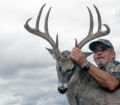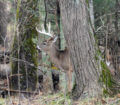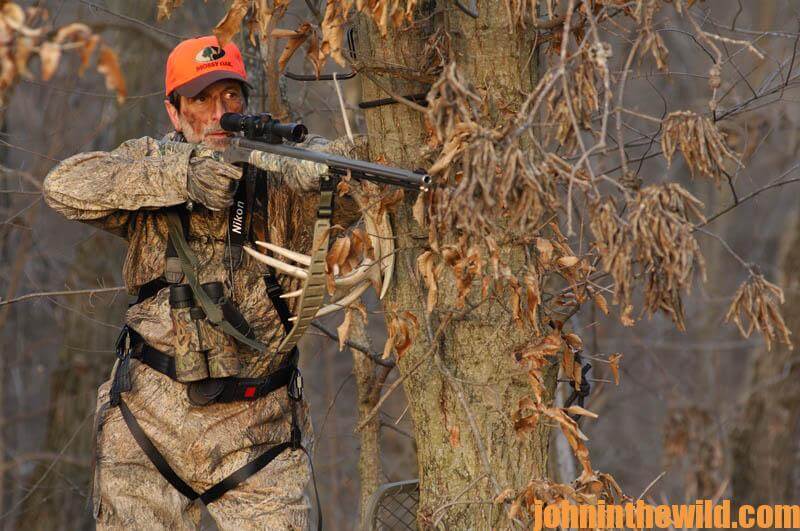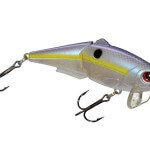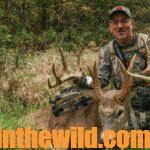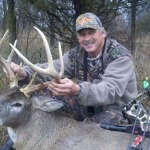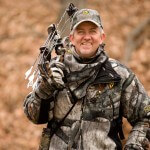Editor’s Note: If you understand what causes the rut, when the rut occurs, and what bucks do during the rut, you can increase your odds for bagging a mature whitetail each season. Of course, all across the U.S., rutting times are different. As many myths exist about the whitetails’ mating season as there are proven scientific facts. To determine what the rut means to the deer hunter and how to hunt the rut more effectively, let’s ask wildlife scientists.
Whenever anyone steps up and says that any tactic is a surefire method to kill a trophy buck, you’ll recognize a lie. However, specific strategies under certain conditions sometimes will bring in a trophy buck – like using rattling.
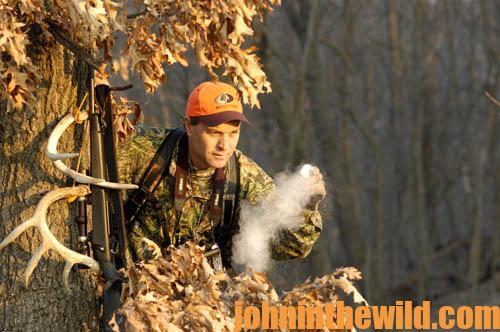 “There are two situations that make rattling work,” Dr. Karl Miller, a research scientist at the University of Georgia’s Deer Lab near Athens, Georgia, explains. “When a dominant buck hears antlers clashing, he may assume other bucks are in his area fighting for dominance, and that one of those bucks may want to challenge him. So, he may come in to attempt to run off the competition. Another reason rattling probably works is because of the deer’s natural curiosity. I think a dominant buck will respond to rattling just to see which deer’s going to get whipped in the fight. Rattling also will bring in does and subordinate bucks, therefore rattling during the rut can be an effective tactic to kill a big buck. However, rattling also has the potential to cause a trophy buck not to come to you. If a trophy buck is tending a doe that’s in estrus, and he hears that rattling, he may not come in because he doesn’t want to run the risk of losing that doe in estrus to simply watch a fight or get involved in a fight. I’ve actually watched a dominant buck steer a doe away from a place where I was rattling.
“There are two situations that make rattling work,” Dr. Karl Miller, a research scientist at the University of Georgia’s Deer Lab near Athens, Georgia, explains. “When a dominant buck hears antlers clashing, he may assume other bucks are in his area fighting for dominance, and that one of those bucks may want to challenge him. So, he may come in to attempt to run off the competition. Another reason rattling probably works is because of the deer’s natural curiosity. I think a dominant buck will respond to rattling just to see which deer’s going to get whipped in the fight. Rattling also will bring in does and subordinate bucks, therefore rattling during the rut can be an effective tactic to kill a big buck. However, rattling also has the potential to cause a trophy buck not to come to you. If a trophy buck is tending a doe that’s in estrus, and he hears that rattling, he may not come in because he doesn’t want to run the risk of losing that doe in estrus to simply watch a fight or get involved in a fight. I’ve actually watched a dominant buck steer a doe away from a place where I was rattling.
 “Many authorities on antler rattling teach that the best time to try the rattling tactic for bucks is during the peak of the rut. However, I disagree. I’ve found the best time to take a trophy buck by rattling is just before the rut and just after the rut. Given the choice, a trophy buck will choose to do the loving instead of the fighting. Rattling can be a productive technique for bagging a trophy buck before and after the rut. Perhaps the dominant one believes that two subordinate bucks have found a doe that has come into estrus early or late in the season, and are fighting over her when he hears horns slashing. He assumes that he can run the other bucks off, and then he can breed the doe.
“Many authorities on antler rattling teach that the best time to try the rattling tactic for bucks is during the peak of the rut. However, I disagree. I’ve found the best time to take a trophy buck by rattling is just before the rut and just after the rut. Given the choice, a trophy buck will choose to do the loving instead of the fighting. Rattling can be a productive technique for bagging a trophy buck before and after the rut. Perhaps the dominant one believes that two subordinate bucks have found a doe that has come into estrus early or late in the season, and are fighting over her when he hears horns slashing. He assumes that he can run the other bucks off, and then he can breed the doe.
“Some of the early criticisms of rattling to bring in bucks included that these were trophy tactics that were successful in Texas and mainly worked there because the sex ratio was close to one buck for one doe. Critics also believed that ratting antlers only brought in trophy bucks. Many whitetail hunters would be satisfied to take a 4- or a 6-point, instead of waiting on a trophy buck. Through the years, I’ve probably rattled up more small deer than big deer. Yearling and 2-year old deer go crazy over rattling. That’s why this technique will be the most productive in the North, the South and other states where mature bucks live. Remember very-few places have a good number of trophy bucks. Young deer will come to rattling quicker because they are insecure and want to be around bigger and stronger bucks. These young bucks are like teenagers at a dance that want to be part of the social atmosphere and are eager to breed any chance they get. Therefore, these big-buck tactics are even more effective on smaller, younger bucks.”
 To learn more about hunting deer with John E. Phillips’ Amazon Kindle eBooks, print books and Audible books (the latest Audible is “How to Hunt Deer Like a Pro”) and Nook books, click here at https://johninthewild.com/books/#deer. You can type in the name of the book and download it to your Kindle, and/or download a Kindle app for your iPad, SmartPhone or computer. For a free download on how to make jerky from venison to provide a protein-rich snack, choose “How to Prepare Venison Jerky: The Ultimate Snack Food” at johninthewild.com/free-books.
To learn more about hunting deer with John E. Phillips’ Amazon Kindle eBooks, print books and Audible books (the latest Audible is “How to Hunt Deer Like a Pro”) and Nook books, click here at https://johninthewild.com/books/#deer. You can type in the name of the book and download it to your Kindle, and/or download a Kindle app for your iPad, SmartPhone or computer. For a free download on how to make jerky from venison to provide a protein-rich snack, choose “How to Prepare Venison Jerky: The Ultimate Snack Food” at johninthewild.com/free-books.

